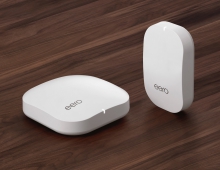
Wi-Fi WPA3 Security is Officially Introduced
The Wi-Fi Alliance introduced Wi-Fi CERTIFIED WPA3, the next generation of Wi-Fi security, bringing new capabilities to enhance Wi-Fi protections in personal and enterprise networks.
Building on the adoption of WPA2 over more than a decade, WPA3 adds new features to simplify Wi-Fi security, enable more robust authentication, and deliver increased cryptographic strength.
WPA3 security continues to support the market through two modes of operation: WPA3-Personal and WPA3-Enterprise. All WPA3 networks use the latest security methods, disallow outdated legacy protocols, and require use of Protected Management Frames (PMF) to maintain resiliency of mission critical networks.
Key capabilities of WPA3 include:
- WPA3-Personal: more resilient, password-based authentication even when users choose passwords that fall short of typical complexity recommendations. WPA3 leverages Simultaneous Authentication of Equals (SAE), a secure key establishment protocol between devices, to provide stronger protections for users against password guessing attempts by third parties.
- WPA3-Enterprise: offers the equivalent of 192-bit cryptographic strength, providing additional protections for networks transmitting sensitive data. The 192-bit security suite ensures a consistent combination of cryptographic tools are deployed across WPA3 networks.
Wi-Fi Alliance introduced enhancements and new features earlier this year for Wi-Fi Protected Access, a family of Wi-Fi CERTIFIED security technologies, to ensure WPA2 maintains strong security protections as the wireless landscape evolves. WPA2 continues to be mandatory for all Wi-Fi CERTIFIED devices. As market adoption of WPA3 grows, the new generation of Wi-Fi security will become required for all Wi-Fi CERTIFIED devices. WPA3 maintains interoperability with WPA2 devices through a transitional mode of operation.
Wi-Fi Alliance also introduced Wi-Fi CERTIFIED Easy Connect, a new program that reduces the complexity of onboarding Wi-Fi devices with limited or no display interface - such as devices coming to market for Internet of Things (IoT) - while still maintaining high security standards. Wi-Fi Easy Connect enables users to securely add any device to a Wi-Fi network using another device with a more robust interface, such as a smartphone, by scanning a product quick response (QR) code.





















